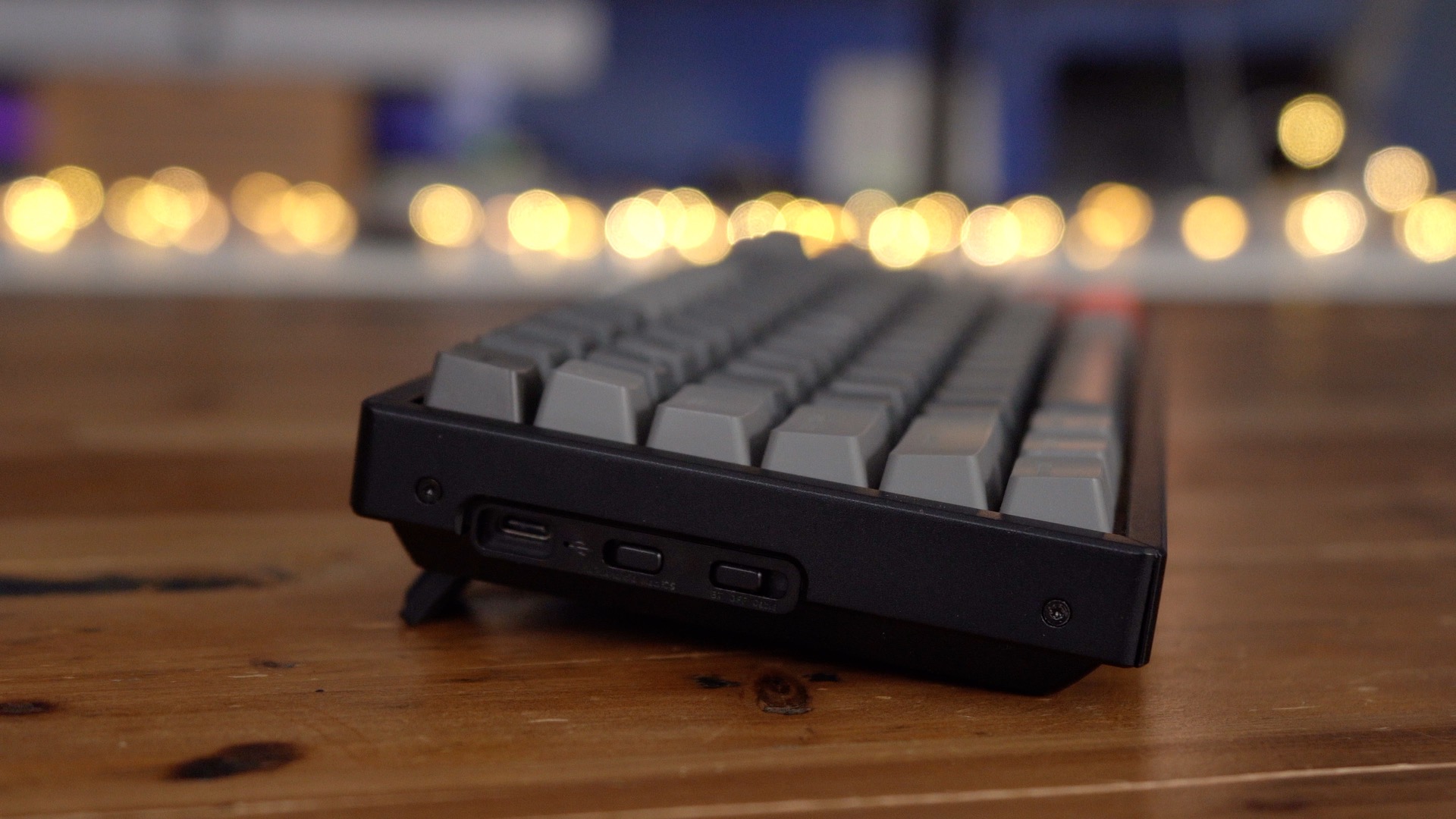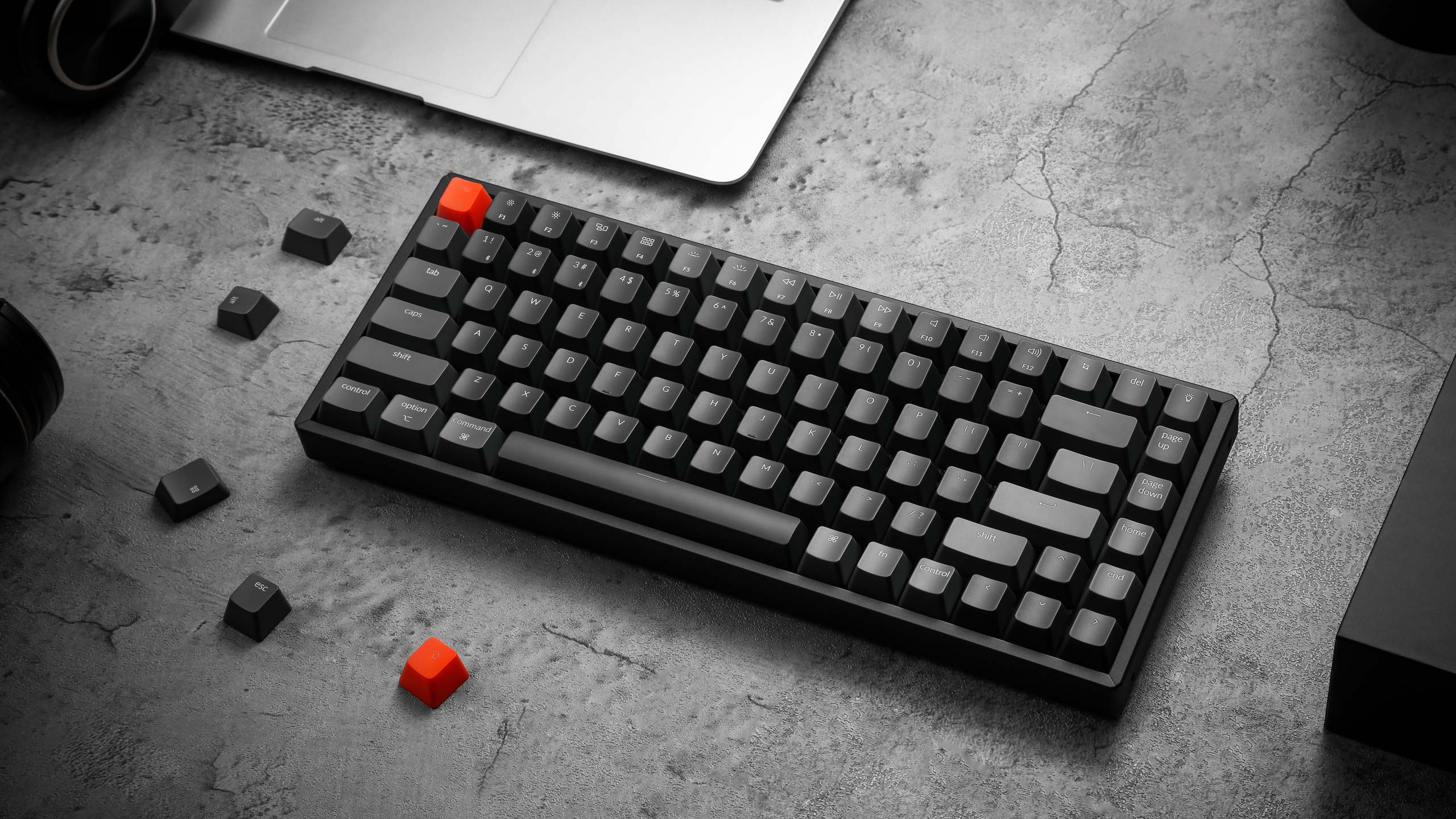
KEYCHRON K2 BATTERY INDICATOR BLUETOOTH
Up until a few years ago, it was nearly impossible to find a mechanical keyboard with built-in wireless Bluetooth connectivity, that’s one of the things that made the original K1 so nice. Overall I’m quite satisfied by the sound, look, and feel of the keyboard in relation to key cap and key switch design. I also suggest watching this video to hear a comparison between the three key switches.īesides the switches, the key caps feature a curved profile, which makes them easy to identify and rest your fingers on. Key switch preference is highly subjective, so if you’ve never experienced a mechanical keyboard before, I think you should start with the brown switches as they provide a good middle ground experience. I opted for the brown switches, because they require less actuation force than a blue switch, with a gentler tactile bump. Blue switches traditionally result in a more clicky tactile response, while brown switches feature a nice tactile feel, but are usually softer and quieter. The Keychron K2 can be configured with Gateron red, brown, or blue key switches. If you’re coming from the original, you’ll notice a big jump in the overall travel distance between the two. The original K1 features low profile switches with 3☐.5mm of total key travel, while the K2 features a significant increase, measuring 4☐.4mm of total travel. Different types of switches result in a different feel when pressing a key. Tactility is heavily influenced by the type of switches found underneath the keycaps. The most important characteristic of any keyboard is the tactile response, and mechanical keyboards traditionally have that in spades. Once you learn what each button does by memory, this will be less of an issue. It’s not that the switches themselves are terrible, but the labels for the switches are impossibly small and you’ll almost need a magnifying glass to identify them. The biggest complaint I have with the Keychron K2’s build quality is the small Bluetooth toggle and device switches on the left side of the unit. Underneath the keyboard you’ll find rubber feet that can be adjusted to provide you with a 6-degree angle for comfortable typing. It’s a fairly minimalist keyboard, which is largely what I prefer. The aluminum chassis provides a solid, weighty feeling to it, and the keys look great. I ended up replacing the ESC and arrow keys, with keys pilfered from my WASD custom mechanical keyboard, in an attempt to make them stand out more. The keys feature a mixture of dark and light gray keys, along with a single orange ESC key.

The Keychron K2 config I’ve been testing features a black aluminum frame with slim bezels wrapping around the perimeter of the keyboard.

More importantly, the K2 features curved keycaps and Gateron key switches, that offer a better tactile feel.

9to5Mac’s Michael Potuck had good things to say about the original in his hands-on review, and Keychron seems to have built on the momentum from the first iteration of its keyboard when creating the K2.Īs you’ll see, the K2 features a design that’s more in line with your typical mechanical keyboard, although it too features a smaller footprint than some of the popular wired mechanical keyboards that I’ve used over the years. Let me start by saying that I’ve never actually used the original Keychron K1. Subscribe to 9to5Mac on YouTube for more videos Design and build


 0 kommentar(er)
0 kommentar(er)
